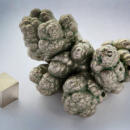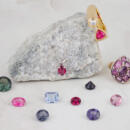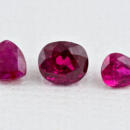Search Results
Fine Jewelry University Articles matching: “black pearls”
Showing only FJU Article results. Click here to show all results.
Fine Jewelry University
-

What to Do When Your Ring Irritates Your Skin
… which can begin hours or even days after contact and may last for several weeks. Some people’s skin even turns black or green when they wear certain jewelry. One of the most common metal allergies is Nickel which is added to pure gold in … a simple discoloration on top of the skin from the metal. Also, tarnish from silver jewelry can rub off and leave a blackish residue. In both cases, the color will easily wipe or wash off. You can avoid this type of discoloration simply …
-

Gem in the Spotlight: Spinel
… underappreciated gemstone of all time. Spinel has been mined for over a thousand years, but until 1783 it was confused with more well-known stones like ruby and sapphire. One of the most famous examples of this confusion was with the Black Prince’s Ruby. This stone currently sits at the front of the Imperial State Crown of the United Kingdom. When it was given to Edward of Woodstock in 1367 it was thought to be a ruby. It wasn’t for nearly 400 years that it was …
-

Gem in the Spotlight: Ruby
… significant sources of rubies include Thailand, Vietnam, Sri Lanka, Tanzania, Mozambique, and Madagascar. Before modern gemology, for thousands of years, garnets, rubies, and spinel have been mistaken for each other. Famously, the Black Prince Ruby (formerly thought of as the largest cut ruby) at the center of the British Imperial State Crown, is actually a red spinel. History and Lore of Ruby The first discoveries of ruby date back to 2,500 B.C. They were found …